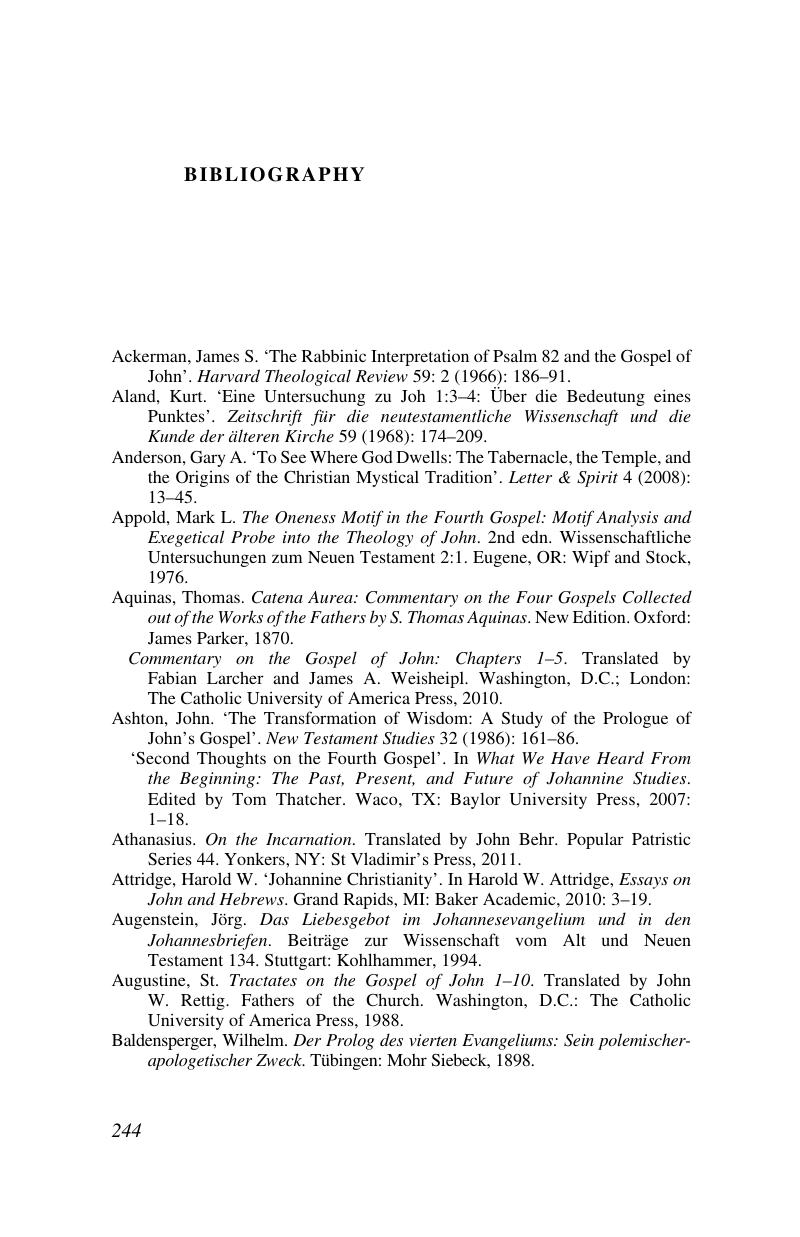Book contents
- Ecclesiology and Theosis in the Gospel of John
- Society for New Testament Studies Monograph Series
- Ecclesiology and Theosis in the Gospel of John
- Copyright page
- Dedication
- Contents
- Preface
- Acknowledgments
- Introduction
- Part I The Narrative Ecclesiology of the Prologue: No Churchless Christ, nor Christless Church
- Part II The Narrative Ecclesiology of the Shema: A Reappraisal of the Johannine Oneness Motif
- Part III John’s Narrative Ecclesiology of Participation and Deification
- Conclusion
- Bibliography
- Index of Subjects
- Index of Modern Authors
- Index of Ancient Texts
- References
Bibliography
Published online by Cambridge University Press: 29 June 2017
- Ecclesiology and Theosis in the Gospel of John
- Society for New Testament Studies Monograph Series
- Ecclesiology and Theosis in the Gospel of John
- Copyright page
- Dedication
- Contents
- Preface
- Acknowledgments
- Introduction
- Part I The Narrative Ecclesiology of the Prologue: No Churchless Christ, nor Christless Church
- Part II The Narrative Ecclesiology of the Shema: A Reappraisal of the Johannine Oneness Motif
- Part III John’s Narrative Ecclesiology of Participation and Deification
- Conclusion
- Bibliography
- Index of Subjects
- Index of Modern Authors
- Index of Ancient Texts
- References
Summary

- Type
- Chapter
- Information
- Ecclesiology and Theosis in the Gospel of John , pp. 244 - 265Publisher: Cambridge University PressPrint publication year: 2017

